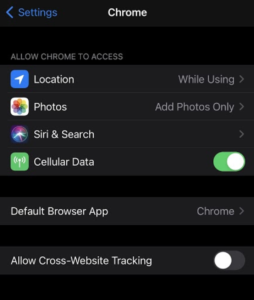When Apple unveiled the AppTrackingTransparency Framework (ATTF) at WWDC in June 2020, predictions of identifier for advertisers (IDFAs) opt-out rates emerged. Whether in similarity to limit ad tracking (~30%) or the 70% who have opted out of location tracking, marketers and publishers understand the implications. Just like the deprecation of third-party cookies, a reduction in IDFAs would limit the ability to perform standard marketing activities such as retargeting, personalisation, suppression, and measurement. This announcement accelerated the pace at which marketers and publishers sought options that would enable them to maintain addressable reach and measure business outcomes across mobile in-app.
While Apple initially issued ATTF requirements in line with the launch of iOS 14 in mid-September, they temporarily delayed implementation, stating, “We want to give developers the time they need to make the necessary changes, and as a result, the requirement to use this tracking permission will go into effect early next year.” However, Apple’s delay is not a change in strategy, and marketers, publishers, and tech leaders are not out of the woods. In fact, iOS 14, which launched on September 16, included an update that turned on WebKit intelligent tracking prevention (ITP) mechanisms by default for all browsers running on iOS 14 and iPadOS 14. This ITP update largely eliminates browser-based addressability on iOS devices. Although this was already a standard for Safari, this change impacts any browser offered on iOS, especially Chrome (Firefox and Brave already prevent collection of third-party cookies).

What the changes in ITP mean for marketers and publishers
While non-Safari browser share on iOS is less than 8%, this change represents further deprecation of third-party cookies and a much-accelerated timeframe than that set by Google for Chrome. More importantly, this shows the industry’s continued trend away from device and browser identifiers such as cookies and mobile IDs.
As the cookie continues to crumble, so too does addressable reach on both desktop and mobile devices. It’s critical for marketers and publishers to make sustainable data and tech investments so they can continue to leverage consumer data in a privacy-first way while also driving a meaningful and measurable consumer experience.
How you can take action today
Addressability benefits everyone in the advertising ecosystem, including consumers, marketers, and publishers. It delivers more relevant experiences, improved measurement and attribution, and highlights the value of various audiences. For more than three-and-a-half years, LiveRamp has been building an identity infrastructure that will serve the entire marketing ecosystem without relying on third-party cookies and other device/browser-based identifiers. Built with consumer trust at the core, LiveRamp Authenticated Identity Infrastructure enables marketers and publishers to commercially connect disparate first-party data sets while protecting user relationships and consumer privacy. The Authenticated Identity Infrastructure goes beyond replacing existing identifiers by delivering upgraded addressability compared to third-party cookies, mobile IDs, and other common identifiers. It improves consumer privacy and consent, delivers higher addressable reach, unlocks previously unaddressable inventory for increased scale, and drives consistency across devices, publishers, and formats.
Marketers: Expand addressable reach with improved match rates and measure 100% of impressions across display, mobile apps, and connected TV (CTV) when transacting on LiveRamp’s durable, people-based identifier.
1. Bid on addressable inventory or use first- or third-party targeting segments that are enabled with LiveRamp’s people-based identifier directly within your DSP. Transacting on the LiveRamp identifier increases scale, precision, and measurability on all inventory types without relying on cookies or mobile IDs.
2. Drive consistency across DSPs, devices, and operating systems by leveraging Deal IDs enabled with LiveRamp’s people-based identifier. Use your highest performing first- or third-party targeting segments via a Deal ID to access addressable inventory and improve reach, accuracy, and reporting on all inventory types without relying on cookies or mobile IDs.
Learn how Fitbit doubled their return on ad spend when using LiveRamp Authenticated Identity Infrastructure in comparison to cookie targeting.
Publishers: Data from Index Exchange indicates that CPMs for Safari fell about 60% since Apple first introduced ITP in 2017. Increase your inventory value across cookieless browsers with authenticated data by integrating LiveRamp’s Authenticated Traffic Solution (ATS). Advertiser targeting and measurement becomes more precise with ATS and increases demand for your inventory, resulting in higher profits, better engagement, and more desirable user experiences.
LiveRamp is committed to remaining open and neutral, and to promoting a healthy and competitive ecosystem. Our Authenticated Identity Infrastructure solutions like ATS prepare the ecosystem to thrive with current or future platform changes introduced by walled gardens, device manufacturers, and regulators. ATS also provides a cross-channel infrastructure that allows marketers and publishers to connect with consumers across display, mobile, and CTV.
Ready to learn more or get started? Send us an email at [email protected].
